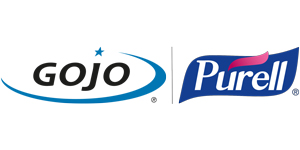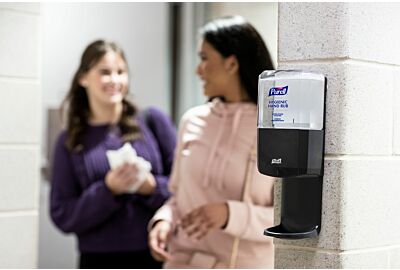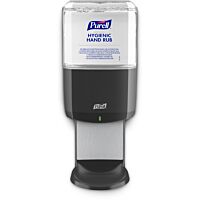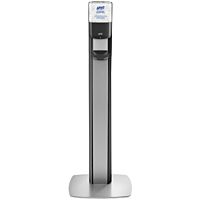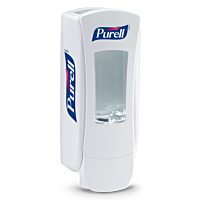When many people come together every day in companies or facilities, good hand hygiene is essential. Shared rooms and surfaces can otherwise quickly become a transmission hotspot for germs and viruses. For this reason, many institutions are increasingly offering not just soap but also hand sanitisers at all washbasins and in the building. Dispenser systems can be an aesthetically pleasing and easy-to-use solution for this. This always provides a portioned amount of soap or hand sanitiser and makes it easy for the user to use. But as so often in life, there is also the agony of choice when selecting a dispenser - automatic or manual?
Automatic or manual - which dispenser choice makes sense?
So-called touch-free dispensers automatically dispense a pre-programmed amount of hand soap or hand sanitiser as soon as they are activated by a sensor. This usually happens when the user holds their hand under the dispenser's dispensing point. Manual dispensers, on the other hand, need to be actively touched in order to dispense the contained product.
Further considerations for manual dispensers:
- manual dispensers require a push button or push bar to be pressed, which provides an additional touch point
- the dispensers are mounted on the wall and require space for this exactly where they are needed
- you don't have to worry about replacing batteries frequently
- fewer opportunities for incorrect or accidental actuations/discharges
- better control over the quantity of the product used
- in certain environments, manual dispensers are preferred, e.g. in prisons, behavioural health facilities and outdoor areas where extreme weather conditions can affect the batteries of automatic systems
When should you choose touch-free dispensers?
Touchless systems, which are activated by a sensor, are suitable for many
locations, especially when there are no walls nearby.
More points about automatic dispensers:
- help reduce germs as they do not provide an additional touchpoint
- easy and fast handling
- can usually be used from different angles or directions, whereas manual dispensers must be operated directly from the front
- tend to suffer less from wear and tear
- contained batteries must be maintained
- innovative automatic dispensers feature new technology that eliminates the need for additional battery costs and maintenance
- electronic hand hygiene monitoring systems usually use contactless dispensers
- by controlling the output, potential waste or abuse is limited
Innovation and reliability in PURELL® dispensers
GOJO has been developing innovative dispensers for more than 70 years, since co-founder Jerry Lippmann invented the very first portion-controlled dispenser in 1952. Today, there are many manual and touch-free dispensing systems in the portfolio. The PURELL® ES8 dispenser system also eliminates dead batteries and simplifies maintenance with AT-A-GLANCE™ refill technology - a dispenser that is slim, reliable and sustainable.
